- Home
- Sharyn McCrumb
Missing Susan Page 19
Missing Susan Read online
Page 19
“Oh,” she said. “But then why did you-”
“An unfortunate lapse,” he assured her. “Lost my head. Please pretend it never happened.”
“Well, okay,” said Kate, shrugging. “I guess we’d better find the others. I want to try some of the spring water.”
Rowan motioned for her to go first. “The others are in the pump room, no doubt hearing how English mineral water compares to Minnesota’s shining big sea waters.”
The fact that he was quite correct in this prediction did nothing to improve his state of mind.
That afternoon Elizabeth MacPherson and Susan Cohen spent an hour looking for Bath’s famous Pulteney Bridge before discovering that they were standing on it. Their hotel brochure did not offer a photo of the bridge, but described it in the text as Florentine style, a term that left them completely baffled.
“With spinach?” suggested Susan.
After determining the whereabouts of the bridge (beneath their feet), they decided that it must mean: built up with shops on each side so that it looks like an ordinary street instead of like a bridge. Still it had some interesting stamp, coin, and antique shops perched over the river, and they spent several hours acquiring more goods than their luggage would accommodate.
“This is such fun,” said Susan, gazing admiringly at her parcels. “If I were back in Minneapolis, Uncle Aaron would be trying to lecture me on mutual funds and treasury bonds and all that boring stuff. And he’s mad because I sold my stock in the business to some very nice Japanese businessmen.” She giggled. “I told Uncle Aaron, ‘If you want me to invest my money in the company, you’d better start publishing thrillers.’ ”
“I take it you two don’t get along,” said Elizabeth.
“I don’t think Uncle Aaron likes me much. He likes making money, but he doesn’t know how to enjoy it. At family gatherings he always looks bored. All he ever gave me for my birthday was a savings bond. He’s my mother’s brother. She died when I was born, but in the pictures we have of her, she looks lovely and silly. I think Uncle Aaron likes his women to be pretty bubblebrains who let him make all the decisions.”
“Look the other way when you cross the street, Susan,” said Elizabeth, holding out a restraining hand as they dodged traffic to investigate another antique shop. “So why wouldn’t your uncle like you? You’re pretty.”
“Only recently,” Susan reminded her. “It’s too late to impress him. He’s had twenty years of ugly duckling me, and he’ll never see me any other way. And I definitely don’t let him make the decisions! But why should I care if he likes me? Thanks to Grandpa Benjie, I have as much money as he does! So what if I lose some of it by not putting it in stupid tax shelters or keeping it in stocks? Spending it is more fun. Anyway, I kind of enjoy annoying him by not putting it into the company.”
“Does the company need your stock?”
“Probably. They’re worried about a takeover or something. The business could get taken out of the family, apparently, and get a lot of longtime employees fired. I don’t listen. Anyway, who cares? Oh, look at that boot scraper shaped like a hedgehog! Isn’t it adorable? And it’s only fifty pounds!”
This combination of search and shopping took them until two o’clock, at which time Elizabeth, with a pang of guilt, remembered her quest for Constance Kent, and went off in search of a library, while Susan, armed with her charge card, disappeared into a bookstore to amass crime novels for her collection.
Elizabeth had little difficulty in locating the public library. Half an hour of browsing in the card catalogue yielded several crime volumes with titles like Victorian Murderesses. Further inquiry unearthed back issues of newspapers of that era for further study. The Trowbridge and North Wilts Advertiser, the Frome Times, and the Bath Chronicle all took an intense and parochial interest in their local tragedy. Elizabeth photocopied the articles for further study.
She commandeered a table for her research, stacking all her parcels in a vacant chair, and setting the books and papers around her while she took notes, pawing through first one source and then another. As the minutes passed, she found the scene beginning to take shape in her mind, as if it were a play she half remembered.
There was Constance Kent, a pretty adolescent looking a bit like the young Princess Anne, turning her profile before the camera with a winsome smile. She wore a stylish brimmed bonnet that curled over the chignon at the nape of her neck, and her girlish figure was shrouded beneath the folds of a tentlike duster coat. Was that before the murder? Difficult to determine her age from that one surviving photograph, but it was a pleasant face, seeming both sensitive and intelligent.
Elizabeth thought of the surly pouts on the faces of other murderesses she had studied: Lizzie Borden with her goose-berry eyes and her pugnacious sneer; the vacant stare of husband-poisoner Adelaide Bartlett; the tight-lipped scowl of Glasgow’s Madeleine Smith, who dosed her lover with arsenic. The shy smile of Constance Kent looked out of place among the faces of these older, harder women. Yet all of them had been acquitted (wrongly, Elizabeth was sure), and little Constance had been sent to prison.
What had happened at Road Hill House, a few miles south of Bath, on the night of June 29, 1860?
Elizabeth searched the sources for a list of the occupants of the house on that fatal night. Constance was there, of course. She was sixteen years old, living with her father Samuel and his new wife, the former governess Mary Pratt. There was a new young governess now, Elizabeth Gough, who took care of Mr. Kent’s children by his second wife: Amelia, five; Francis, three and one half; and the baby Eveline. There were also three older children, Constance’s full siblings, who slept on the third floor of the house, as did Constance, the cook, and the maid.
“That shows you where they stood in the pecking order,” Elizabeth muttered, noting down the locations of the rooms. The small children slept in the second-floor nursery with Miss Gough.
On the morning of June 30, 1860, Elizabeth Gough awakened at seven to find that the little boy was missing from his bed. When she knocked at his parents’ door to ask if Mrs. Kent had taken the child during the night, she was told that the Kents had not seen the child since his bedtime the night before. Mrs. Kent was angry with the distraught nursemaid. Mr. Kent lay in bed with his eyes closed, silent but not asleep.
The search was on.
The older Kent daughters came down from their rooms and two of them became quite upset at the news that their half brother was missing. Constance, however, stood silently composed. The third-floor sleepers all maintained that they had slept through the night without hearing any disturbance, but the maid did recall that when she had gone downstairs at five that morning a window was open, and the door was ajar.
“I wonder if she was the suggestible type,” Elizabeth mused. “Next she’ll be claiming she saw tramps lurking around the grounds.”
When a search of the house failed to turn up the missing child, Mr. Kent finally got up, called for his pony and trap, and set off to inform the police. Elizabeth pictured Samuel Kent, a pompous and selfish man of fifty-nine, enraged at this domestic upheaval that inconvenienced him, and perhaps terrified at the prospect of having lost his son. He was a lavish spender, eager to impress the world with his fine horses and fashionable clothes, but his squandering left the house short-staffed and sometimes created hardships for his family. Servants kept leaving because he worked them too hard and paid too little.
“Apparently the governess did double duty,” drawled Elizabeth, thinking of Kent’s hasty marriage to twenty-one-year-old Mary Pratt after the death of his first wife.
Perhaps now the paterfamilias wished that he’d had fewer waistcoats and more servants. Perhaps, as he hurried along the four-mile stretch of road to Trowbridge, he wondered if any of his neighbors had killed the child for revenge. Samuel Kent had prevented the neighbors from fishing in the river near his rented mansion and he had prosecuted some local boys for theft. Besides, tongues were still wagging about his second marri
age. Samuel Kent was not a popular man locally.
While he was gone to summon the police, two farmworkers who had joined in the search for the missing child found Francis Savile Kent’s body. It was wrapped in his own crib blanket and stuffed behind the splash board in the outdoor privy a hundred yards or so from Road Hill House. The boy’s body bore a deep stab wound between the ribs and his throat had been slashed from ear to ear.
Elizabeth shivered. “Three and a half years old,” she murmured, picturing the sturdy toddler. The little boy in the apartment next to theirs in Edinburgh was three. Judging from that child’s development, Savile should have weighed more than thirty pounds, and he would have been talking clearly and in complete sentences.
After an hour or so, Samuel Kent returned with two Trowbridge policemen, whom he proceeded to supervise in their investigation. He ordered them to search the grounds and the outbuildings, and he accused his neighbors of killing the child over the fishing rights squabble. Then he suggested Gypsies might have done it. The police were allowed to search the servants, not the family.
“I wonder if he suspected his daughter?” Elizabeth said. “He didn’t want to believe it. That’s for sure.” She read on quickly to see what evidence their search uncovered.
They inspected the child’s bed and found that he had been suffocated there. The mattress and pillow showed deep impressions of Savile’s head and thigh, as if someone had held him down, pushing very hard to smother him. Although the blanket from the bed had been used to wrap the body, the bed had been carefully remade to look undisturbed, so that the marks of the murder were not at first apparent. They also determined that Savile was already dead when his throat was cut in the outside privy.
In a search of the house, the officers found a bloodstained shift of coarse material, stuffed in the back of the scullery boiler. A shift, Elizabeth knew, was a sort of slip that might be worn as a nightgown or as an undergarment. “Oh-ho,” said Elizabeth. “Wouldn’t I like to run tests on those bloodstains.” When was this? Eighteen sixty. It was another thirty years before Paul Uhlenhuth discovered the way to differentiate between human and animal blood. She wondered if they still had that shift.
As if anticipating her curiosity, the next sentence stated that the shift was subsequently lost before its owner could be identified. “The police obviously didn’t secure the area back then,” Elizabeth muttered. “Mr. Kent again?”
The officers did manage to determine that the shift was not the only missing garment in the case. Mrs. Holly, the village laundress, reported that when she received the washing from Road Hill House on the day of the crime, the laundry list indicated that three nightdresses were sent, but she only found two among the soiled clothing. The missing one belonged to Constance.
When after two weeks the local constabulary had made no headway with the case, Scotland Yard sent down Inspector Jonathan Whicher to take over. Perhaps because of the missing nightdress and the tales of a runaway Constance four years earlier, the inspector fixed his suspicions on the sixteen-year-old girl, but he also thought the nursemaid might be guilty. After questioning both, the nursemaid was let go and Constance was arrested and charged with the murder of her half brother.
She appeared before local magistrates on July 27 and Whicher’s scant and circumstantial evidence was presented. Perhaps he hoped that under the pressure of a hearing she would confess to the crime, but she did not. She sat with her black-gloved hands folded and listened calmly to her school-friends testify that she had disliked her stepmother and had found her young half brother annoying.
Other witnesses pointed out that the day before the murder, Constance had been playing happily with Savile and that he was making a bead necklace for her, as she had painted a picture for him not long before.
I’ll bet the locals felt sympathetic toward her, Elizabeth thought. A pretty sixteen-year-old whose stepmother mistreated her and whose father was a louse. The police probably came off looking like bullies. “And she didn’t confess,” Elizabeth said aloud. “Interesting.”
The barrister hired by the Kents to defend Constance made short work of the prosecution’s case. How could this frail girl carry a heavy child down the stairs and so far from the house? he demanded. Of the murder itself, he said: “Is it likely that the weak hand of this young girl… can have inflicted this dreadful blow? Is it likely that hers was the arm which nearly severed the head from the body? It is perfectly incredible.”
“I don’t know,” said Elizabeth. “Lizzie Borden was a nice young gentlewoman and she committed two ax murders. Still, I wonder why Constance waited five years to confess. Why did she confess at all?”
Someone tapped her on the shoulder. Elizabeth looked up to see a nervous-looking librarian, apparently uneasy about approaching this patron who kept muttering to herself. “I’m sorry, but we’re about to close for the day.”
Elizabeth gathered up her photocopies, and thanked him for his help. I suppose I’ll have to find another source of information farther along on the tour, she thought. So far she hadn’t found anything to convince her that Constance Kent was innocent, but the lack of motive troubled her. So did the girl’s winsome smile. Had Constance been a poisoner, Elizabeth wouldn’t have questioned her guilt, but butchering a child? The savagery of the crime seemed beyond the emotional range of that shy young girl who had no other history of violence. But if not Constance, then who? And why?
That evening in the bar of the Francis Hotel, the tour members gathered around for an evening of beer and storytelling. Emma and Miriam were still absent from the group. Susan and Rowan argued for an hour over the guilt of Richard III in the murder of the little princes in the tower. Susan, citing Josephine Tey’s Daughter of Time and Elizabeth Peters’ The Murders of Richard III, argued the king’s innocence. Rowan quoted a few historians of the era and insisted that Richard was guilty. Neither succeeded in convincing the other.
Finally, Elizabeth MacPherson managed to divert the conversation to her own pet case. “Did you find out whether Road Hill House is still standing?” she asked.
“I asked another crime expert, Kenneth O’Connor, and he assures me that it is,” Rowan told her. “Unfortunately for our purposes, he also assures me that the road is too narrow for our coach. After the King Harry Ferry incident, I am loath to ask Bernard to make risky excursions to unscheduled places.”
“I did some more reading on the case this afternoon,” said Elizabeth. “And I’m still not convinced of Constance’s innocence. How do you explain the bloodstained nightdress?”
Rowan cleared his throat and glanced at the rest of the group. “Perhaps the way Lizzie Borden explained it in her case,” he said.
“Oh,” said Elizabeth, blushing. “Menstrual blood.”
At this point Charles Warren stood up, yawned, and said that it was past his bedtime.
Rowan glanced at his watch. “Perhaps we all ought to turn in,” he said. “We have a long day tomorrow. We’re off to Wales. I am sorry to say that Emma and Miriam won’t be joining us. In view of Emma’s illness, they have decided to fly home.”
“Is she very ill?” asked Frances Coles.
“The doctor thinks not,” Rowan said truthfully. “But she isn’t up to the rigors of the tour. She’d be better off at home in bed.”
“What are we seeing tomorrow?” asked Kate Conway. She had been making sheep’s eyes at him all evening, he noticed uncomfortably. Rowan had immersed himself in double Scotches and ignored her overtures.
“In the morning, Hereford Cathedral,” he said, avoiding her eyes. “But I think the real treat for some of you will be our lunch stop at the Welsh village of Hay-on-Wye.”
“Herbert Rowse Armstrong!” cried Elizabeth, in a tone of voice usually heard in connection with rock stars’ names.
“Yes, Hay-on-Wye does have its local poisoner,” the guide conceded. “He’s the lawyer I told you about, who kept inviting a rival attorney over for tea. The fellow noticed that tea with Mr. Armstrong inva
riably made him ill. He was canny enough to save a bit of it and have it tested. Lawyers are a suspicious lot, aren’t they? He was right, of course. His tea was poisoned and Armstrong went to the gallows. Actually, though, I was thinking of Hay-on-Wye’s other claim to fame. The village is known for its large assortment of used bookstores.”
“Make it a long lunch stop,” said Susan with shining eyes.
“You may be able to find some more books on Constance Kent,” Rowan told Elizabeth.
“She didn’t write an autobiography, did she?” asked Elizabeth suspiciously. “What ever happened to her anyway?”
“Let us leave that chapter for our next fireside chat,” Rowan said. “I have had enough double Scotches this evening.”
“Excuse fingers.”
– HERBERT ROWSE ARMSTRONG, offering
an arsenic-laden scone to a rival solicitor
CHAPTER 13
HAY-ON-WYE
SUSAN COHEN WOULD forever think of Hereford Cathedral as an obstacle on the way to the used book mecca at Hay-on-Wye. She trotted through the morning tour of the Gothic cathedral with ill-concealed impatience, barely glancing at the cathedral’s pride and joy, the Mappa Mundi, a thirteenth-century map of the world. So great was her disdain that she did not even bother to liken the church or its exhibits to any comparable wonder in Minnesota. She fidgeted through the tour of the sanctuary and had to be nudged to remind her to stop tapping her foot while the guide was speaking.
Elizabeth MacPherson, unable to discover any murders, witch-burnings, ghosts, or other sensational items connected with the stately old church, shared Susan’s restlessness. The lunch stop, Hay-on-Wye, had both a famous murderer and used bookshops.
At last, the serious-minded members of the group finished inspecting the Mappa Mundi, the ancient books chained to benches in the library, and the carved choir seats. Rowan, for once, had little to add to the information supplied by the cathedral guide, and the tourists hurriedly resumed their places in the coach and headed for the green hills of Wales.

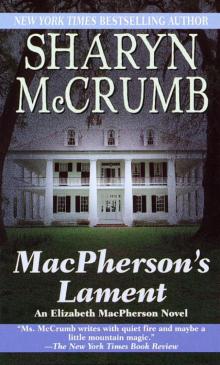 Elizabeth MacPherson 07 - MacPherson’s Lament
Elizabeth MacPherson 07 - MacPherson’s Lament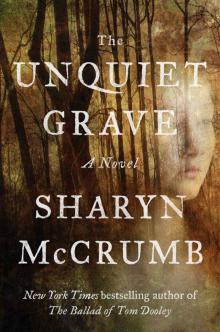 The Unquiet Grave: A Novel
The Unquiet Grave: A Novel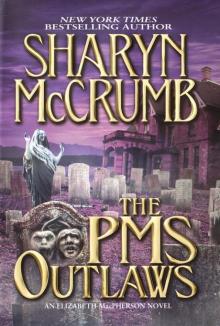 The PMS Outlaws: An Elizabeth MacPherson Novel
The PMS Outlaws: An Elizabeth MacPherson Novel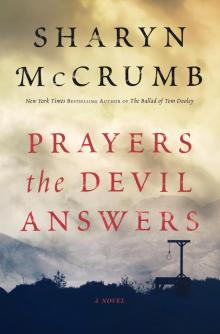 Prayers the Devil Answers
Prayers the Devil Answers Paying the Piper
Paying the Piper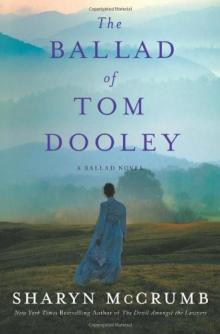 The Ballad of Tom Dooley: A Ballad Novel
The Ballad of Tom Dooley: A Ballad Novel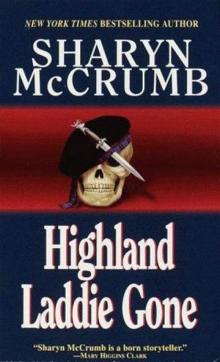 Highland Laddie Gone
Highland Laddie Gone The Unquiet Grave
The Unquiet Grave The Devil Amongst the Lawyers
The Devil Amongst the Lawyers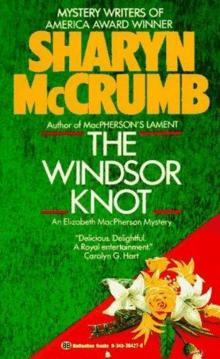 The Windsor Knot
The Windsor Knot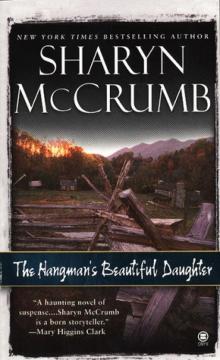 The Hangman's Beautiful Daughter
The Hangman's Beautiful Daughter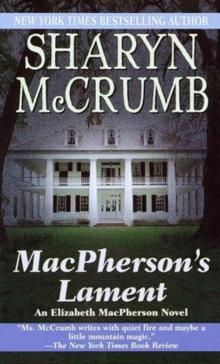 MacPherson's Lament
MacPherson's Lament The Ballad of Tom Dooley
The Ballad of Tom Dooley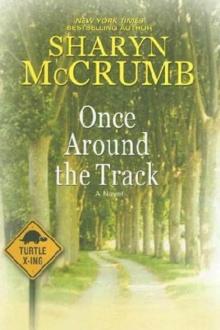 Once Around the Track
Once Around the Track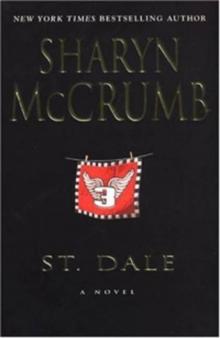 St. Dale
St. Dale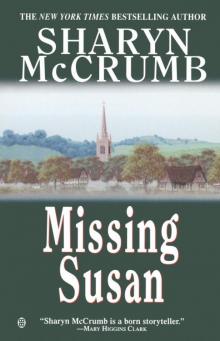 Elizabeth MacPherson 06 - Missing Susan
Elizabeth MacPherson 06 - Missing Susan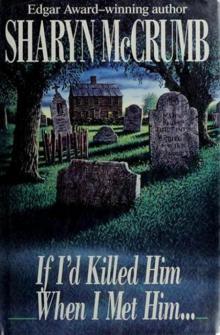 If I'd Killed Him When I Met Him…
If I'd Killed Him When I Met Him…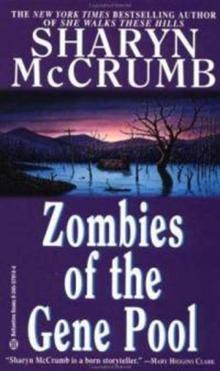 Zombies of the Gene Pool
Zombies of the Gene Pool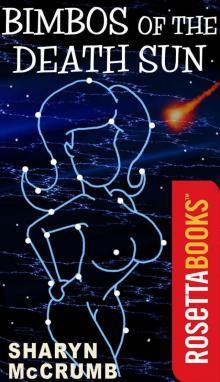 Bimbos of the Death Sun
Bimbos of the Death Sun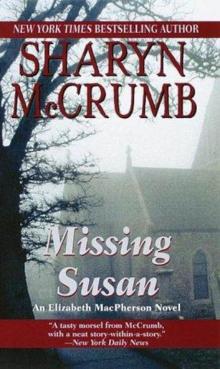 Missing Susan
Missing Susan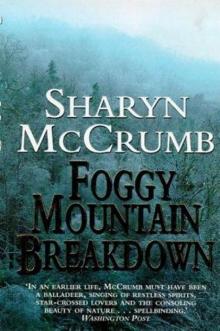 Foggy Mountain Breakdown and Other Stories
Foggy Mountain Breakdown and Other Stories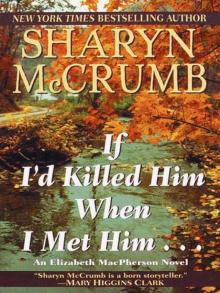 If I'd Killed Him When I Met Him
If I'd Killed Him When I Met Him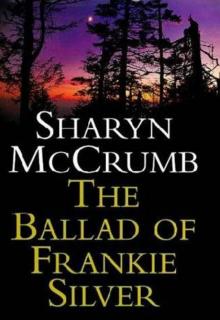 The Ballad of Frankie Silver
The Ballad of Frankie Silver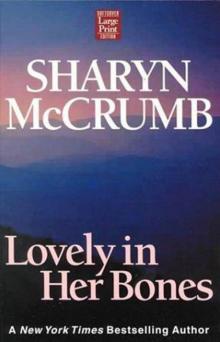 Lovely In Her Bones
Lovely In Her Bones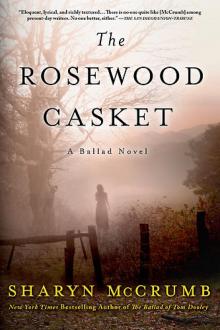 The Rosewood Casket
The Rosewood Casket King's Mountain
King's Mountain